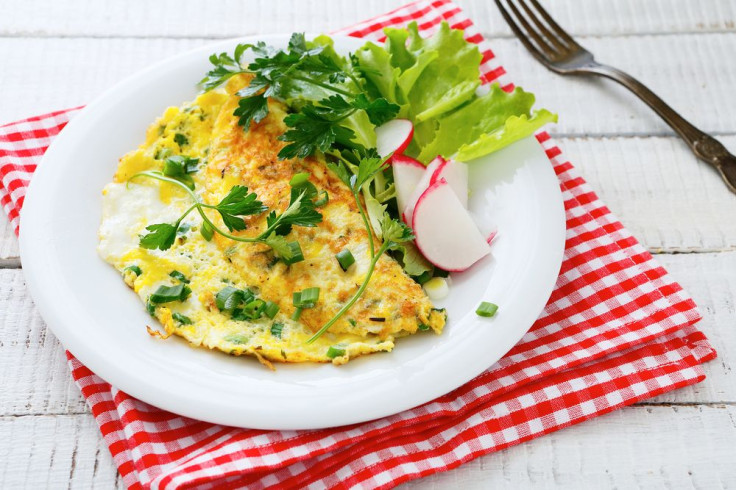4 Ways To Add The Protein Power Of Eggs To Your Diet Without Increasing Your Cholesterol

Eggs can be a nutrient-packed addition to any breakfast meal, but figuring out the right way to cook them is vital to maintaining a healthy cholesterol balance. Although fears over the sizeable amount of cholesterol found in eggs and the risk of heart disease have long been disproved, a fried egg sandwich with bacon and cheese is still not the preferred method of preparation. A whole egg contains 72 calories, 4.8 grams of fat, 6.3 grams of protein, and 186 milligrams of cholesterol, most of which are found in its yolk. From frittatas to omelets, there are many ways to prepare an egg that can be both delicious and nutritious.
Hard-Boiled
Cooking up a hard-boiled egg may seem like an easy task; however, there is a lot of room for error. Over-cook a hard-boiled egg and you’ll notice a green ring around the yolk that can leave a sulfuric taste in your mouth after breakfast. No matter what method you apply to cooking eggs, be sure they were purchased less than a week ago.
Fill a stove-top saucepan with cold water so it is covering the eggs by at least an inch. Set burner to high heat and let simmer until the water turns to a boil. Place eggs in a bowl with ice and water before letting stand for 10 to 12 minutes so they are easier to peel. Crack eggs on countertops, roll between palms, peel away skin, and enjoy. The beauty of hard-boiled eggs is that people who would rather go without yolks can remove them even after they are cooked.
Scrambled
Scrambled eggs are a staple of any breakfast and quick to prepare. For two to four servings of scrambled eggs, prep four whole eggs, a quarter cup of milk, salt, pepper, and two teaspoons of margarine (let's avoid butter for the sake of a healthy diet). Beat mixture in a bowl until it’s completely blended. Place nonstick iron skillet on stovetop set to medium heat. Coat skillet with low-fat cooking spray to avoid sticking. Pour in mixture and pull eggs across the pan. As curds begin to form, continue to pull, lift, and fold eggs until white or yellow liquid remains (around four minutes). Keep an eye on the skillet, but don’t stir constantly because it does need time to cook. Serve alongside chopped fruits and vegetables, whole grain toast, and lean ham.
Egg White Omelet
Looking to avoid the yolk all together? Egg white omelets are simple to cook and are versatile with ingredients including spinach, ham, tomatoes, onions, and peppers. Crack four eggs into the palm of your hand (one at a time) and let whites sift between your fingers into the mixing bowl. Add desired ingredients with salt, pepper, and extra-virgin olive oil. Coat non-stick skillet with low-fat cooking spray and pour in mixture. Add shredded cheese (preferably low-fat) into the middle of omelet mixture before folding it over with the spatula. Let cook for 1 ½-2 minutes on both sides. During any egg preparation method, make sure both whites and yolk are thoroughly cooked to prevent illness from bacterium such as Salmonella.
Poached
Don’t be intimidated. Poached eggs can actually be prepared with ease using the right tools. Fill a saucepan with water up to three inches with a teaspoon of kosher salt, and turn on medium heat. Also add vinegar to the water to help the egg congeal easier. Crack the egg into saucer, cup, or ramekin (if egg poacher is not handy) and place in simmering water until whites become solid around hardened yolk (usually around five minutes). Use a straining spoon to lift the poached egg out of water. Serve the poached egg on its own, in a salad, on a sandwich, or alongside meat and fruit.



























